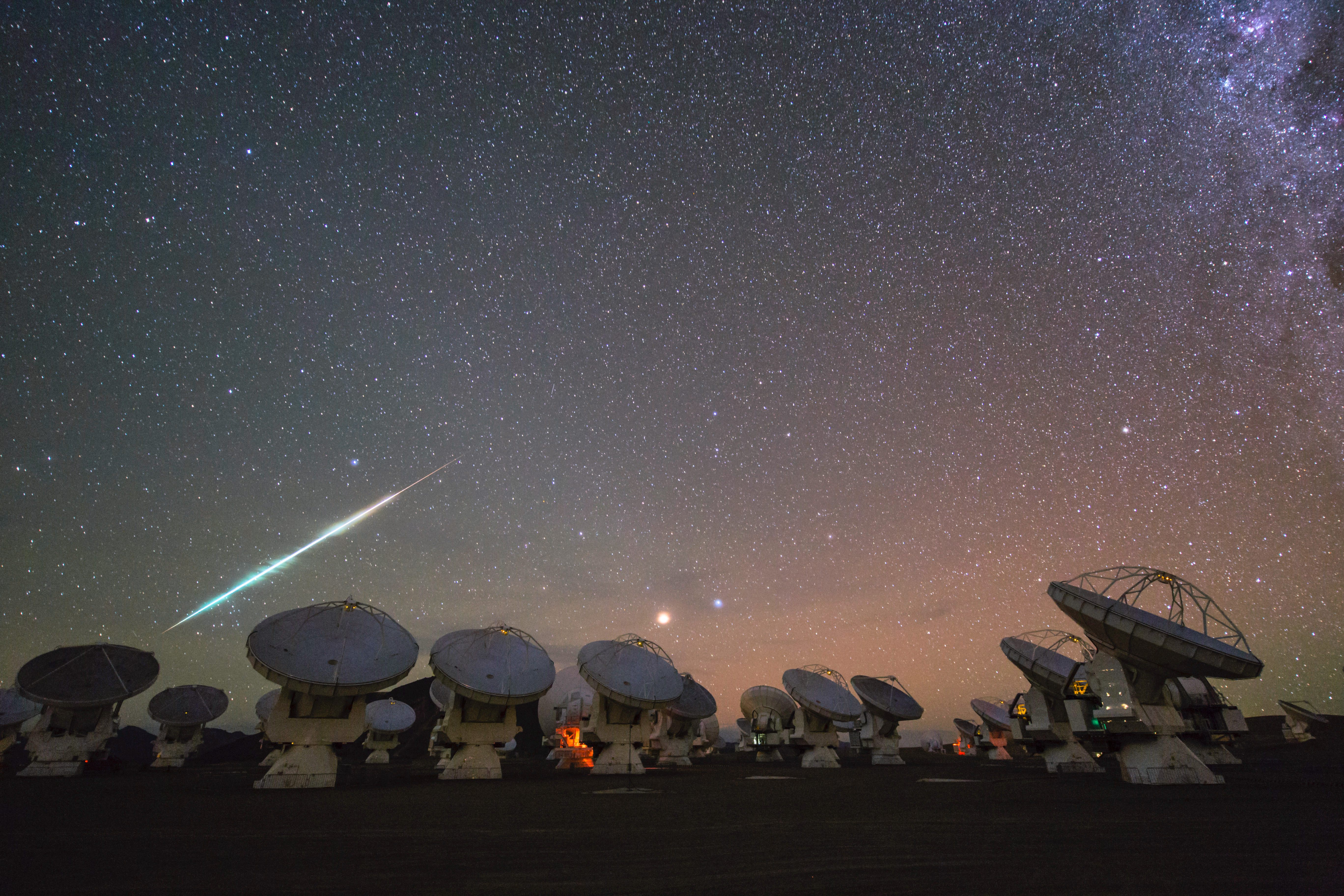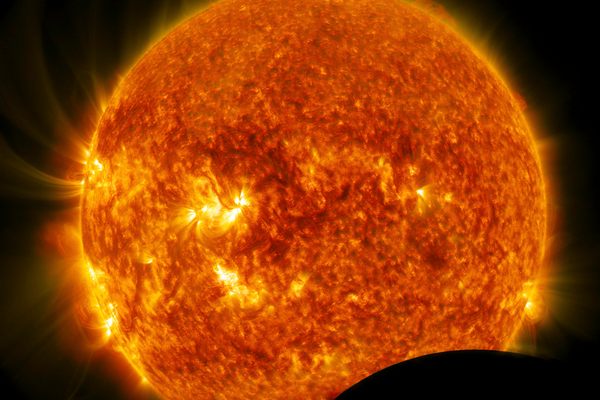Scientists Needed to Build a ‘Planet-Sized Telescope’ to See the Black Hole
But to get a sharper look, we’ll have to journey to space.

If you’re attempting to peer deep into space, Chile is a great place to try. Roughly 16,000 feet up on the sprawling, beige Chajnantor Plateau—where the high elevation and low humidity make for good visibility—more than five dozen antennae stare skyward. These clustered radio telescopes comprise the Atacama Large Millimeter/submillimeter Array, or ALMA. They are powerful instruments—but, on their own, even these aren’t able to capture a clear image of the black hole in the galaxy known as Messier 87.
This insatiable, inscrutable portal is 55 million light-years from Earth, and 6.5 billion times more massive than our Sun. This week, the international consortium of researchers working on the Event Horizon Telescope project released the first image of the black hole—or actually, of its shadow, which is 2.5 times larger than the boundary of the hole itself. Producing the image required the assistance of more than a half-dozen telescopes across the world, from Chile to Mexico to Hawaii, and the efforts of more than 200 scientists. The project is so complex that collaborators “must all be a piece of a well-oiled mega machine,” says Sara Issaoun, a graduate student in astrophysics at Radboud University, in the Netherlands, and an observational astronomer on the EHT team.
The notion of the “planet-sized” telescope “is not just a turn of phrase,” says Joseph Farah, an undergraduate at the Harvard-Smithsonian Center for Astrophysics working on the EHT imaging. Observations poured in from radio telescopes at “high and dry sites at the most extreme locations in the world,” Issaoun says—essentially creating one huge, virtual telescope encompassing much of the globe.

When that data arrived, it was kind of a mess. “The raw data from the telescopes are a collection of radio signals with lots of noise, including a tiny, tiny signal from the black hole—not the beautiful image,” says Junhan Kim, a doctoral student in astronomy at the University of Arizona, who contributed to the research. The telescopes collected several hard drives’ worth of data, which were precisely time-stamped, then cleaned up and synthesized using supercomputers in Massachusetts and Bonn, Germany, Kim says. To arrive at this striking image, Kim adds, “the entire Earth-sized array has to behave as if we have a single telescope, collecting the signal simultaneously.”
The more telescopes, the better and more complete the image will be, says Farah. “If we could, we’d fill the entire world with telescopes,” Farah jokes. (“We’d leave at least a little bit for houses,” adds Dominic Pesce, a postdoctoral fellow at Harvard University’s Black Hole Initiative, where he works on modeling on the EHT team.)
Filling in the array with more telescopes in between the existing ones could help researchers learn more about the structures around the black hole, says Andrew Chael, a graduate student in astrophysics at Harvard who works on the imaging aspects of the EHT project. Chael says that telescopes near Baja, California, for instance, would be well positioned to augment observations from existing ones in Arizona and Mexico. Issaoun points to the Greenland Telescope, Arizona’s Kitt Peak Telescope, and one in the French Alps as ones coming on board to help observe M87. The Africa Millimetre Telescope, which is proposed for Gamsberg, a mountain in Namibia, “will also provide additional coverage and new orientations,” Issaoun says, “filling up the southeast portion of our array and bringing African partners to the EHT.”
To get the clearest images of this black hole and others, we’ll have to go at least a little bit closer to them. “The ‘dream array’ of the future, in my opinion, would involve several strong sites on the ground operating in tandem with an extensive array of telescopes in space dedicated to black hole imaging,” says Daniel Palumbo, a graduate student in astronomy at Harvard and a member of the EHT team. “Since space dishes don’t need good weather, this array could observe for most of the year without issue.” Low Earth orbits (where satellites and the International Space Station live) would be ideal for capturing moving images, while dishes farther out into the reaches of space would give better resolution of slower-moving sources, Palumbo says.
For now, we’ve got this image—searing, blurry, nearly miraculous, and a reminder of all the wonders we have yet to see.




















Follow us on Twitter to get the latest on the world's hidden wonders.
Like us on Facebook to get the latest on the world's hidden wonders.
Follow us on Twitter Like us on Facebook